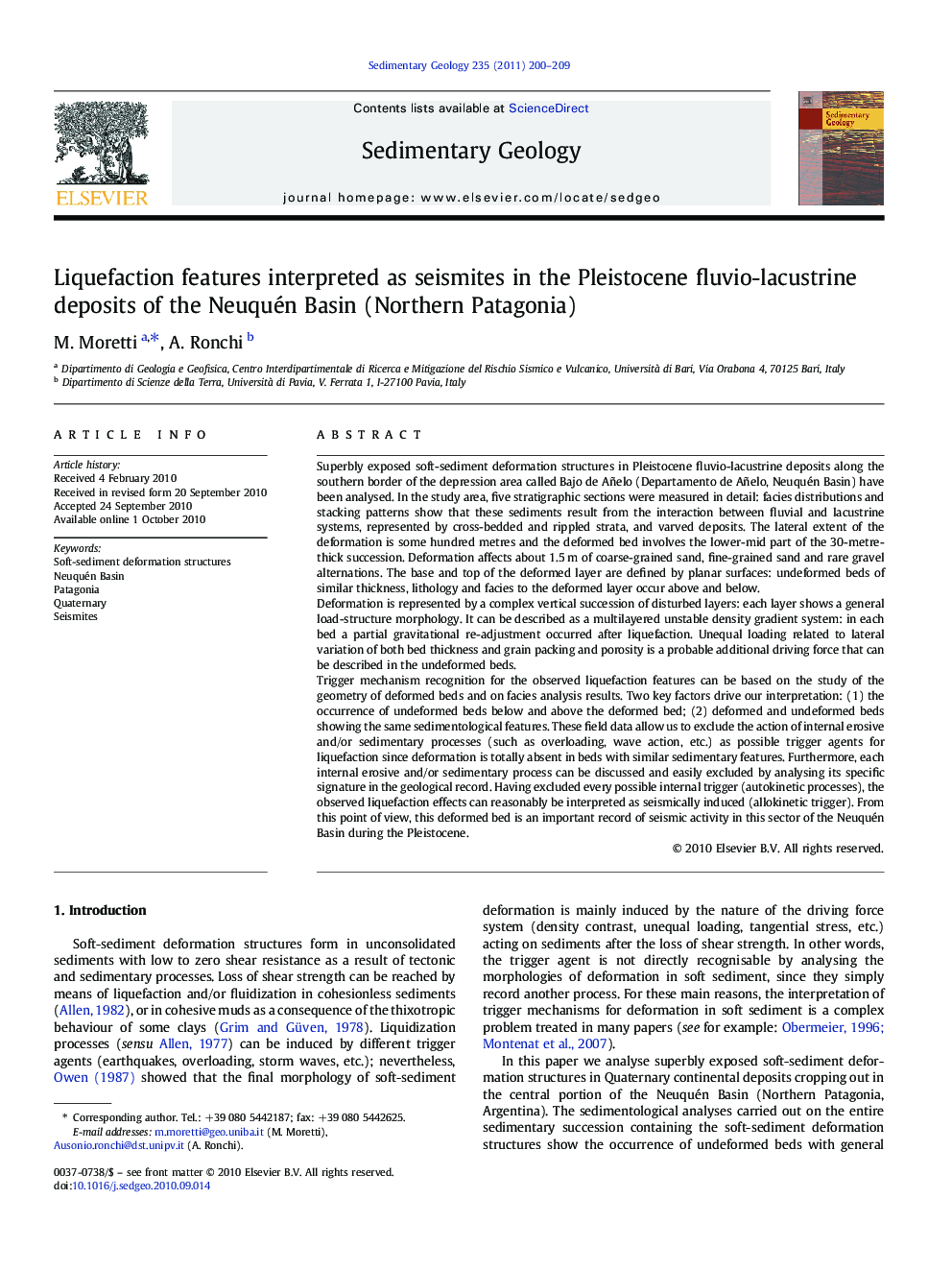| کد مقاله | کد نشریه | سال انتشار | مقاله انگلیسی | نسخه تمام متن |
|---|---|---|---|---|
| 4690241 | 1636112 | 2011 | 10 صفحه PDF | دانلود رایگان |

Superbly exposed soft-sediment deformation structures in Pleistocene fluvio-lacustrine deposits along the southern border of the depression area called Bajo de Añelo (Departamento de Añelo, Neuquén Basin) have been analysed. In the study area, five stratigraphic sections were measured in detail: facies distributions and stacking patterns show that these sediments result from the interaction between fluvial and lacustrine systems, represented by cross-bedded and rippled strata, and varved deposits. The lateral extent of the deformation is some hundred metres and the deformed bed involves the lower-mid part of the 30-metre-thick succession. Deformation affects about 1.5 m of coarse-grained sand, fine-grained sand and rare gravel alternations. The base and top of the deformed layer are defined by planar surfaces: undeformed beds of similar thickness, lithology and facies to the deformed layer occur above and below.Deformation is represented by a complex vertical succession of disturbed layers: each layer shows a general load-structure morphology. It can be described as a multilayered unstable density gradient system: in each bed a partial gravitational re-adjustment occurred after liquefaction. Unequal loading related to lateral variation of both bed thickness and grain packing and porosity is a probable additional driving force that can be described in the undeformed beds.Trigger mechanism recognition for the observed liquefaction features can be based on the study of the geometry of deformed beds and on facies analysis results. Two key factors drive our interpretation: (1) the occurrence of undeformed beds below and above the deformed bed; (2) deformed and undeformed beds showing the same sedimentological features. These field data allow us to exclude the action of internal erosive and/or sedimentary processes (such as overloading, wave action, etc.) as possible trigger agents for liquefaction since deformation is totally absent in beds with similar sedimentary features. Furthermore, each internal erosive and/or sedimentary process can be discussed and easily excluded by analysing its specific signature in the geological record. Having excluded every possible internal trigger (autokinetic processes), the observed liquefaction effects can reasonably be interpreted as seismically induced (allokinetic trigger). From this point of view, this deformed bed is an important record of seismic activity in this sector of the Neuquén Basin during the Pleistocene.
Journal: Sedimentary Geology - Volume 235, Issues 3–4, 1 April 2011, Pages 200–209